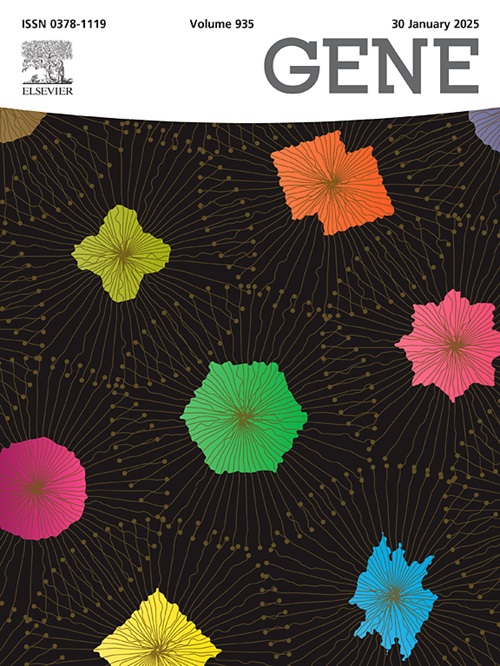Glucose transporter-1 (GLUT-1) upregulation in vitiligo: A possible link to skin depigmentation
IF 2.6
3区 生物学
Q2 GENETICS & HEREDITY
引用次数: 0
Abstract
Background
Vitiligo is a prevalent autoimmune skin disorder characterized by progressive depigmented patches of the skin and/or mucosa. Lately, extensive research has been investigating molecular pathogenesis underlying vitiligo, epidermal-immune cell crosstalk, structural aberrations in cellular skin components and immune cell metabolism derangements. Glucose transporter-1 (GLUT-1) has recently proved to be increased in proinflammatory conditions and autoimmune diseases. GLUT-1 expression is upregulated in rheumatoid arthritis, systemic lupus erythematosus, psoriasis and chronic spongiotic dermatitis.
Objective
To investigate GLUT-1 expression in vitiligo.
Subjects and methods
The study included 30 vitiligo patients “vitiligo vulgaris” and 30 healthy individuals. Biopsies of the patients’ lesional vitiligo skin and the control group’s normal skin were obtained. They were all tested for GLUT-1 mRNA expression using real-time polymerase chain reaction (RT-PCR) and GLUT-1 antibody expression using immunohistochemistry (IHC). Hematoxylin and eosin (H&E) staining for the specimens was additionally done for histopathological assessment.
Results
GLUT-1 expression was upregulated in lesional skin of vitiligo patients compared to normal control skin (P-value < 0.001). Also, lesional specimens from stable disease showed more GLUT-1 expression than active disease but without a significant difference (P-value = 0.283). There was no significant correlation between the proposed vitiligo histological scoring system and vitiligo signs of the disease activity score.
Conclusion
GLUT-1 could play a crucial role in vitiligo disease onset, persistence and progression, through keratinocyte-melanocyte-fibroblast-immune cell crosstalk, being the initially deranged metabolic pathway for all these cells giving an insight into vitiligo metabolomics.
背景:白癜风是一种常见的自身免疫性皮肤病,其特征是皮肤和/或粘膜出现进行性色素脱失斑。最近,人们对白癜风的分子发病机制、表皮-免疫细胞串联、细胞皮肤成分的结构畸变和免疫细胞代谢紊乱进行了广泛的研究。最近的研究证明,葡萄糖转运体-1(GLUT-1)在促炎症和自身免疫性疾病中会增加。在类风湿性关节炎、系统性红斑狼疮、银屑病和慢性海绵状皮炎中,GLUT-1 的表达上调:研究对象和方法:研究对象包括 30 名 "寻常型白癜风 "患者和 30 名健康人。对患者的白癜风皮损皮肤和对照组的正常皮肤进行活检。使用实时聚合酶链式反应(RT-PCR)检测 GLUT-1 mRNA 的表达,使用免疫组织化学(IHC)检测 GLUT-1 抗体的表达。此外,还对标本进行了血红素和伊红(H&E)染色,以进行组织病理学评估:结果:与正常对照组皮肤相比,白癜风患者皮损处 GLUT-1 表达上调(P 值 结论:GLUT-1 在白癜风患者皮损处可能发挥重要作用:GLUT-1可通过角质细胞-黑色素细胞-成纤维细胞-免疫细胞的串联,在白癜风的发病、持续和进展过程中发挥关键作用,是所有这些细胞最初失常的代谢途径,从而为白癜风代谢组学提供了新的视角。
本文章由计算机程序翻译,如有差异,请以英文原文为准。
求助全文
约1分钟内获得全文
求助全文
来源期刊

Gene
生物-遗传学
CiteScore
6.10
自引率
2.90%
发文量
718
审稿时长
42 days
期刊介绍:
Gene publishes papers that focus on the regulation, expression, function and evolution of genes in all biological contexts, including all prokaryotic and eukaryotic organisms, as well as viruses.
 求助内容:
求助内容: 应助结果提醒方式:
应助结果提醒方式:


